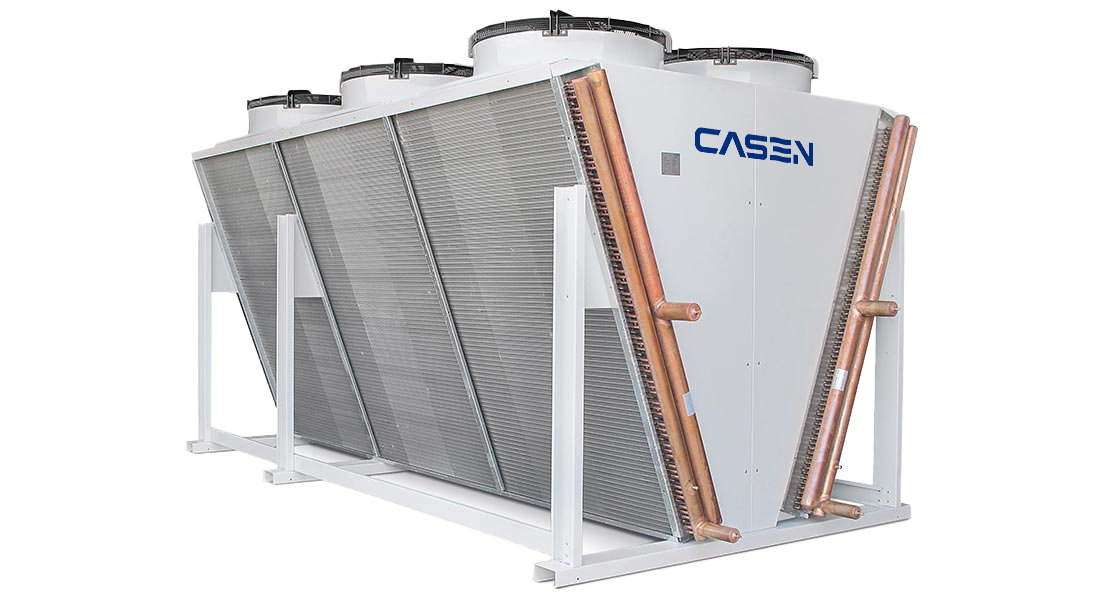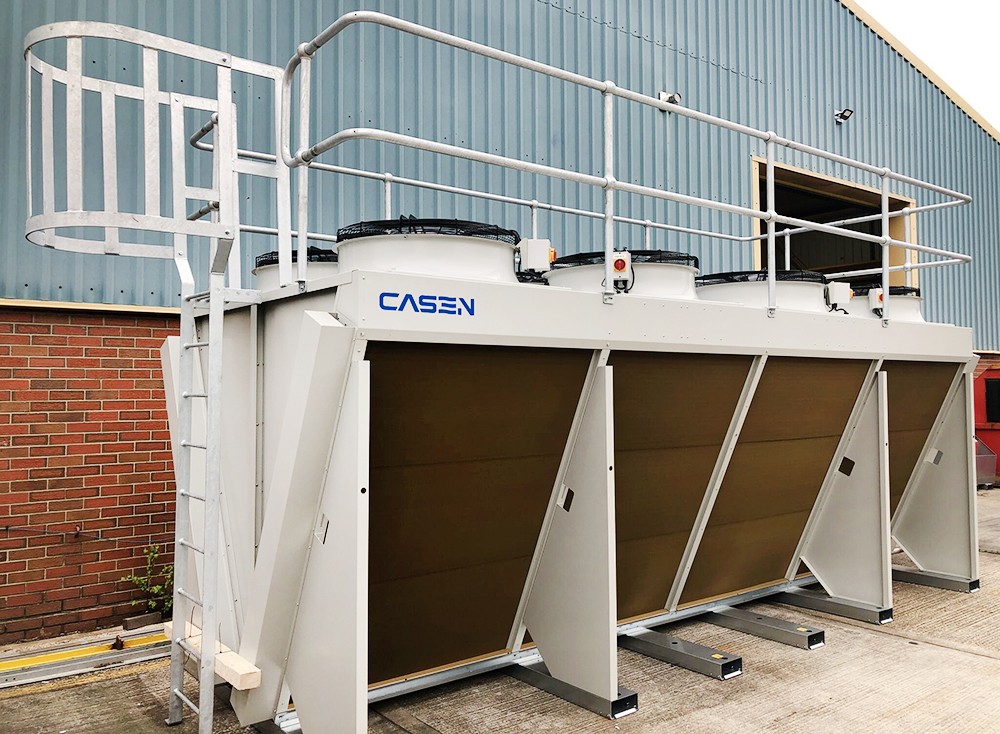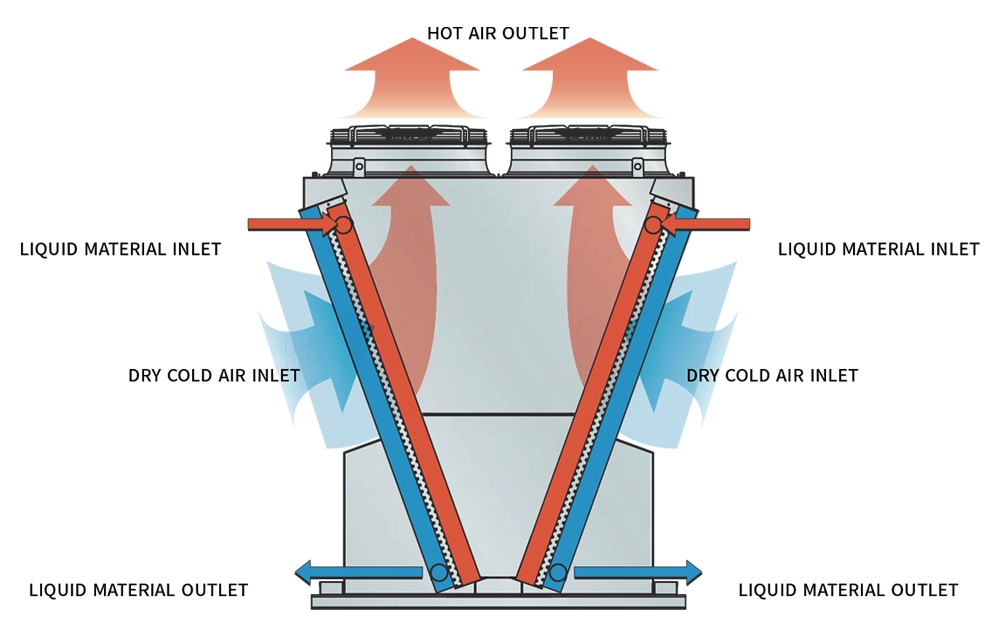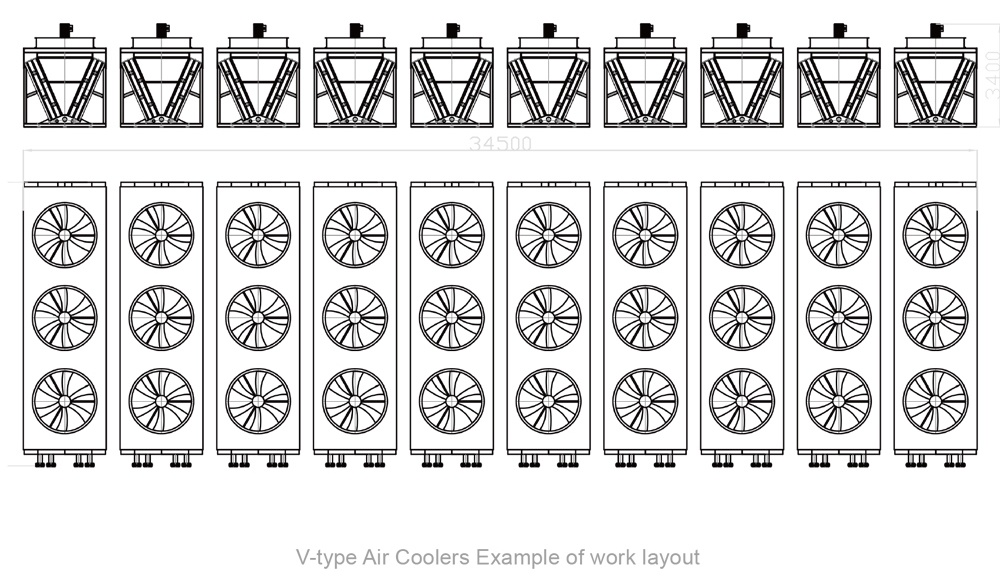V-TYPE(DRY)AIR COOLER
The air cooler uses ambient air as the cooling medium, and traverses the finned tube to cool or condense the high-temperature process fluid in the tube, referred to as "air cooler", also known as "air-cooled heat exchange"
V-type air cooler is the most widely used heat exchange equipment for condensation and cooling in petrochemical and oil and gas processing and production. V-type air cooler is generally composed of tube bundles, tube boxes, fans, shutters and the main components of the structure. The structure is V-shaped, which has the characteristics of small footprint, high heat exchange efficiency and convenient transportation. The V-shaped angle is generally 45°C or 60°C.

Optimized Structure, Suitable to Container Shipping
Large Air Volume, High Effective in Heat Transfer
Low Energy Saving By High Efficiency Motors
Top Quality Fin Tube Coil, Compact Structure
Water Saving, Low Noise, Cost Effective

KEG CHARACTERISTICS
Individual Fan Drive System, Super Low Sound Axial Fan, Induced Draft
CTI Standard STD-201(21) Coil Design
Capacity Range100 - 3000KW(For Single cell models, nominal R717 KW, suitable to container delivery)
TYPICAL APPLICATIONS
Suitable for serious water shortage area
Suitable for areas with strict noise requirements
Suitable for cold regions
Limited plan area installations
Indoor installations
Dry operation in winter time
Hot liquid material enters the coil inlet, shown in red. Heat from the process fluid is dissipated across the coil surfaces and transferred to the fins. Ambient air is drawn into the unit by a top-located fan and flows over the coil surfaces. Heat from the process fluid is transferred to the air and then vented to the atmosphere. The cold liquid material flows out of the unit through the coil outlet, as shown in blue in the figure.
what is the advantage of dry cooler
Dry cooling removes heat from a system using sensible heat rejection. The lack of water and any need for water treatment greatly reduces the required maintenance for this type of cooling equipment.

